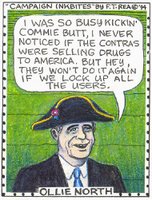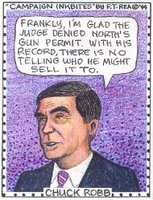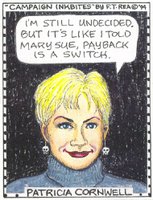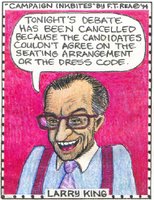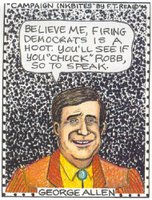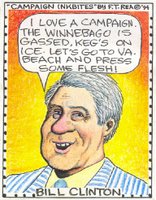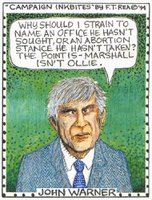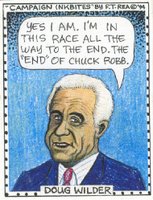 The Biograph Naturals, 1981-82 CBA champions.
The Biograph Naturals, 1981-82 CBA champions.
Note: The CBA was the Central Basketball Alliance. It lasted three seasons: 1980-81, 1981-82 and 1982-83.
*
During
the month of March, each year, the season for the men's basketball conference tournaments and the NCAA men’s basketball tournament is a
blessing. The surprises and suspenseful moments of the games help get
basketball junkies, like me, through those last tedious days of winter.
Of
course, to be a junkie
in full bloom one must still play the game. Since I quit playing
basketball in 1994, I suppose I’ve been a junkie in recovery. Yes, I’ll
always miss the way a perfectly-released jump shot felt as it left my
fingertips. Nothing in my life has replaced the satisfaction that came
from
stealing the ball from an opponent, just as he stumbles over his hubris.
It's especially nice when, as a result, you get an uncontested layup -- providing, of course, you don't miss the snowbird.
Every March, as my favorite teams are eliminated and my brackets
crumble, I cling to the notion that by the time of the Final Four
games, the warm spring weather will have arrived ... and baseball season will already be underway. Although I enjoyed playing basketball more than baseball and softball, in my sorely missed playing days, baseball was my first love in sports.
The
years I've spent covering
college basketball, as a writer, have helped to soothe my basketball
jones. Since the improvisational aspect of basketball has always
appealed to
me, from a seat on press row it's fun to watch particular players who
have a special knack for seizing the moment. If it's a player you've
seen plenty of, sometimes, from the expression on his face, you can
sense what he's about to do, sort of like it was when you played and knew your teammates' moves so well.
While
basketball is in some ways a finesse game, more than a power game like football -- injury-wise -- if you play
enough of basketball there are some brutal truths it will inevitably serve up.
And, although I’ve heard people claim that we can’t
remember pain, I have not forgotten what it felt like to
dislocate my right ankle on the afternoon of April 20, 1985; I was
undercut finishing an out-of-control, one-on-five fast break.
While I'd love to say the
ball went in the basket, I don't remember that part. What
I do remember is flopping around on the hardwood floor, like a
fish out of water; literally, out of control. Take it from me, dear reader,
popping your foot off the end of your leg hurts way too much to forget
-- think James Caan in “Misery” (1990).
But this story is about another injury. On March 4, 1982, my then-34-year-old nose was broken during the
course of a basketball game. In that time, the Biograph Theatre, which I
managed, had a men's team in a league called the Central Basketball Alliance.
Other teams were sponsored by the Track, Soble’s, Hababa’s, the Jade
Elephant, etc. Personnel-wise, the CBA was an off-shoot of the Fan District
Softball League, with some of the same characters.
The morning after my nose was bashed in by
an opponent’s upwardly thrust elbow, while I was coming down from a
failed attempt at snatching a rebound, I went to Stuart Circle Hospital
to have the damage checked.
My nose wasn’t just broken, it had been
split open at the bridge in three or four directions. The emergency room
doc used Super Glue and a butterfly clamp to put it all back together.
This was before such glue had been approved for use in this country, so
he asked me not to tell anyone what he had done; I hope the statute of
limitations has run out.
After getting an X-ray I was waiting
around in the hospital lobby to sign some papers and my grandmother -- Emily “Villa”
Collins Owen -- was wheeled by. She was stretched out on a hospital bed. As I
grew up in her home and was still very close to her, it had the same
panic impact as seeing one’s parent in such an abrupt
context.
We spoke briefly. She said she was feeling a
little weak from a cold and had decided to spend the night in the
hospital. She lived just a few blocks away. Pretending to ignore my
gripping sense of panic, I calmly assured Nana (pronounced Ny-nuh) I’d
be back during visiting hours, to see how she was doing.
That
evening
I took my then-12-year-old daughter, Katey, with me to see Nana. The
doctor came in her room and told us she’d be fine with a good night’s
rest. Katey and I spent a half-hour making our 83-year-old Nana laugh as
best she could ... feeling a little weak.
Six decades before this she had
trained to be a nurse at that same hospital, which has now been
converted into condos. Nana died later that night; it was in the wee hours of the morning that followed. When the phone call from her doctor came, the news sent a shock-wave through my being unlike anything else, before or since.
AS that news sunk in I realized that had
luck not
interposed a fate-changing elbow to my beak, Katey
and I may not have had that last precious visit with Nana. Knowing my
grandmother, I'm not at all sure she would have let anybody know she was
in the hospital. At least, not right away.
Which means I have to say
the palooka who elbowed me in that basketball game did me a favor.
Perhaps in more ways than one.
You see, in order to keep playing
in the Biograph’s games in that season, I needed to protect my nose
while it healed. So, I got one of those protective aluminum nose-guards
I’d seen players wear. It was a primitive version of the clear plastic
masks in use today.
As a kid, I saw future-NBA great Jerry
West wearing such a broken-nose-protector when he was playing his college ball at West Virginia. It
impressed the 12-year-old version of me to no end; I marveled at how
tough and focused West was.
So, wearing what was to me a
Jerry West mask, I played the rest of the CBA season -- maybe five more
games. Now I have to believe that period was about the best basketball I ever
played. Maybe not wanting another whack to the nose made me a little more
careful. Maybe more purposeful, too, which is probably a good trait for a point guard to have.
Anyway, it apparently was just what my game had been needing. Our
team didn’t lose another game that year;
the Biograph Naturals won the league’s championship. In looking back on
those weeks after my grandmother's death, I can easily see that in
testing my nerve, in a fashion
after the way West had tested his, in the spring of 1982 I was living
out a boyhood dream. Some of the game's lucky breaks can only be
detected in the rear-view mirror.
*
Note: If you've seen some other team pictures in which I am clowning around, truth be told, there are plenty of them. So you might ask: wasn't I aware that one day I might cringe at how silly some of them look? Of course I was hip to that likelihood, nonetheless, in those days I liked to play tricks on whoever was handy ... even on myself in the future.
-- 30 --





